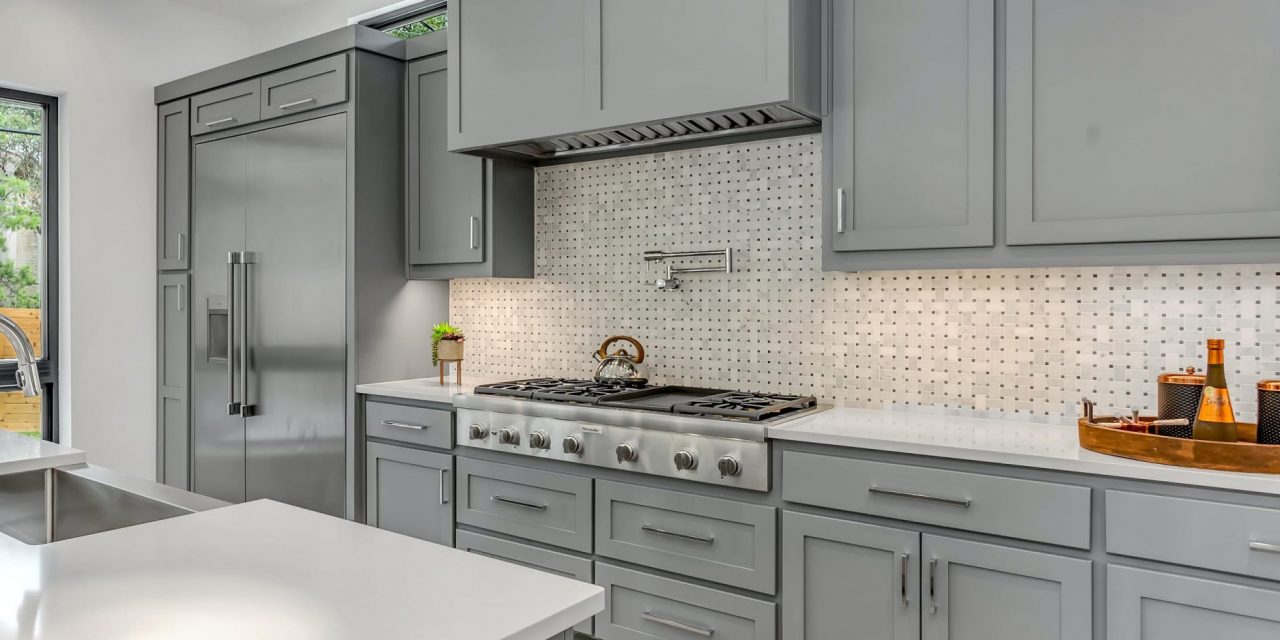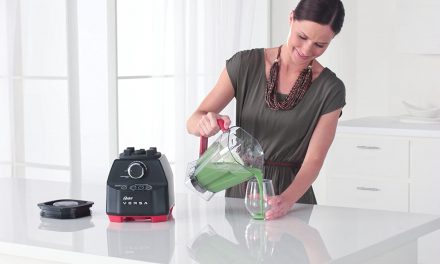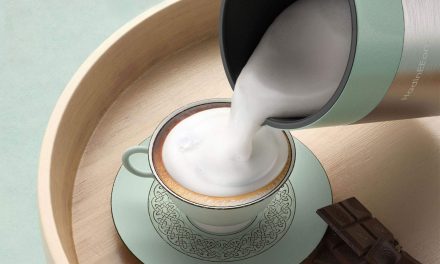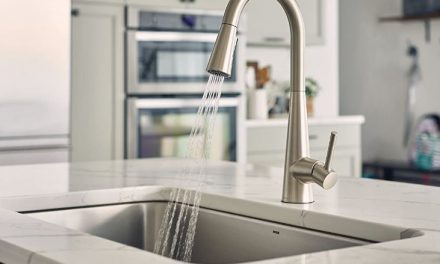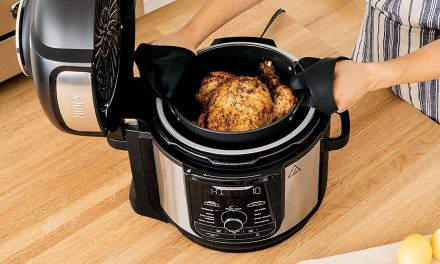Cabinet hardware is sometimes called the jewelry of kitchens and bathrooms. They’re small pieces in the grand scheme of things, but they can have a big impact, not just for the cabinets, but for the room as a whole. With the right combination of cabinetry and hardware, any look can be achieved, from rustic and vintage designs to modern and contemporary styles.
In this article, we’ll talk about how cabinets and cabinet hardware, like knobs and pulls, can be combined to achieve a variety of looks both modern and traditional. We’ll dig into the most popular cabinet designs and the best way to mount the hardware you choose onto them. We’ll even look at some basic installation principles so you can DIY with ease.
Table of Contents
Types of modern cabinet styles
Whether simple or complex, a kitchen going for a modern or contemporary style should be functional and attractive. In general, you’ll avoid traditional tenets of design, embrace clean lines, and use a minimal amount of patterns. However, the world of modern cabinet styles is complex and there’s more variation than you might expect.
There are three main branches of modern styling you’ll find in kitchens and bathrooms:
- Minimalism focuses on clean lines, flatness, and simplicity in both its cabinets and hardware.
- Industrialism is similar to minimalism, in that it appreciates lines and clean edges, but it differs in the way it draws attention to raw materials, like concrete and stone, wood, and unfinished steel.
- Eclecticism draws on different styles, materials, and textures to achieve a more whimsical look. Overall, it feels modern, but you’re much more likely to see warmer colors and subtle nods to traditional design principles or materials.
Modern cabinetry and hardware
Cabinetry is just as important as your flooring, walls, and counters when it comes to setting the design “tone” of your kitchen or bathroom. For modern cabinetry in either room, you have a number of options, but the most common are slab cabinets and shaker cabinets.
Arguably, the trendiest option for kitchen cabinetry is the slab cabinet. Also known as flat panel cabinets, slab cabinets have a single, smooth surface, instead of the various shapes and indentations frequently seen in traditional and even shaker cabinetry. The result is very clean and contemporary. For this reason, slab cabinets are very popular in newer homes or remodeling jobs that are going for minimalistic or industrial styles. As a bonus, slab cabinets also tend to be available in a wider variety of materials than other types of cabinets, including stainless steel, aluminum, and glass.
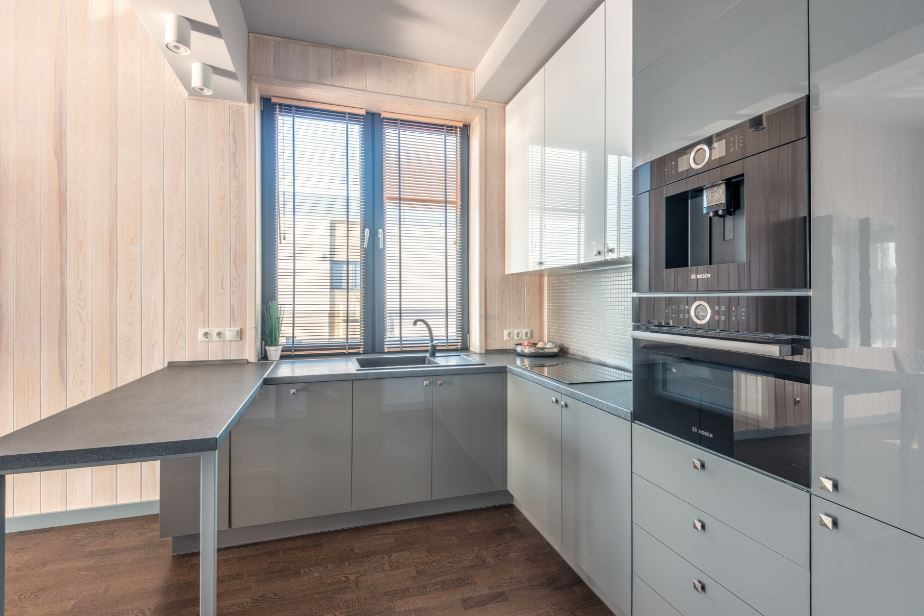
A modern kitchen with glass slab cabinets and rectangular knobs. Public domain photo by Max Vakhtbovych from Pexels
Another good option for a modern kitchen or bathroom is the shaker cabinet. These cabinets, which are also called recessed cabinets, have a central, inset part, called a panel, that doesn’t stick out as far as its front-facing border. Depending on the hardware you mount to them, shaker cabinets can be modern or traditional, making them a great, versatile option. They’ve been popular for decades for a reason.
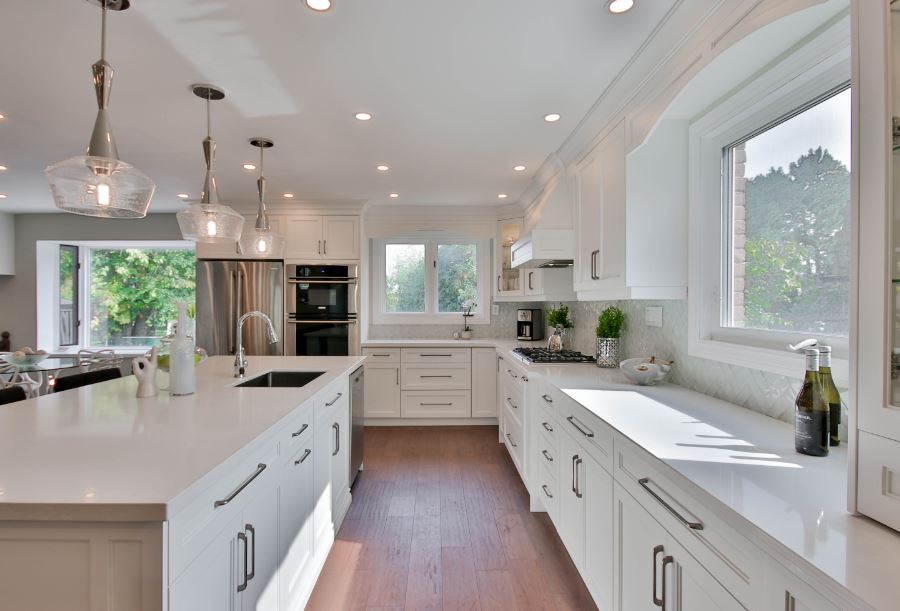
A modern kitchen with white shaker cabinets and simple bar pulls. Public domain photo by Sidekix Media from Unsplash.
Once you’ve chosen a modern cabinet style, a lot comes down to the types of hardware you use to ornament it. Different design branches have different norms and principles for choosing hardware.
Minimalistic design principles
In minimalism, simplicity, flatness, and sleekness are emphasized. If that’s conjuring up images of Apple products, there’s a reason for that!
Minimalistic cabinetry is likely to be slab or an unornamented style of shaker. And the hardware used in minimalism should be equally uncomplicated. Sometimes there’s no hardware at all!
Consider continuous rail cabinets, where a rail is installed behind the cabinet doors and drawers, providing a gap for easy access. Molded finger pulls are another good option. In this style, the handle is completely integrated into the cabinet doors and drawers. A small lip is cut into the cabinetry to allow it to be opened.
Electric, magnetic and spring-loaded push-to-open cabinets are another great minimalist option. As are recessed cabinet pulls, which give a sleek look to cabinets. For a streamlined look that’s a little simpler and more traditional, consider finger pulls.
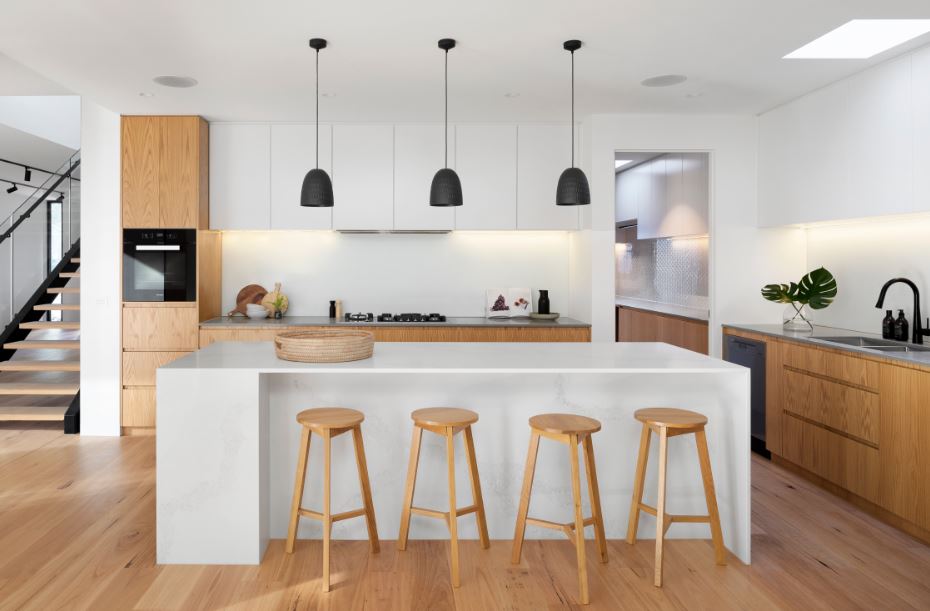
A minimalistic kitchen with continuous rail cabinets. Public domain photo by R Architecture from Unsplash.
Simple bar pulls are common and are sometimes paired with square, rectangular, or t-shaped bar knobs. Oversized pulls are also a popular style.
If you decide to go with pulls for your minimalistic bathroom or kitchen, consider choosing a single pull for all your cabinet doors and drawers, especially in smaller kitchens and bathrooms.
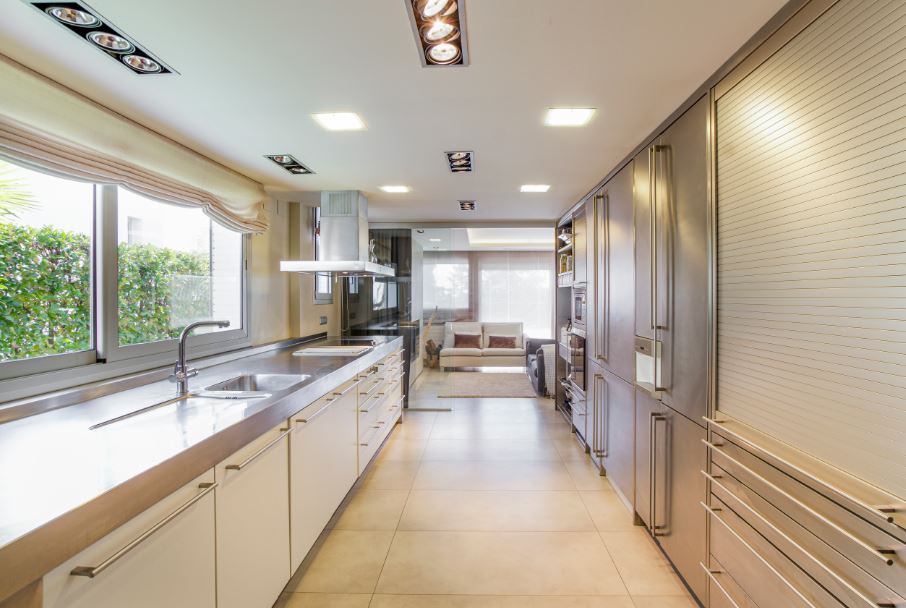
A minimalist kitchen with slab cabinets and oversized brass bar pulls. Public domain photo by Isaac Quesada from Unsplash.
In terms of color and finishes, minimalism loves solid colors, neutral palettes (e.g., whites and grays), and bold contrasts (e.g., black and white). Black matte hardware on white cabinetry is an incredibly popular option.
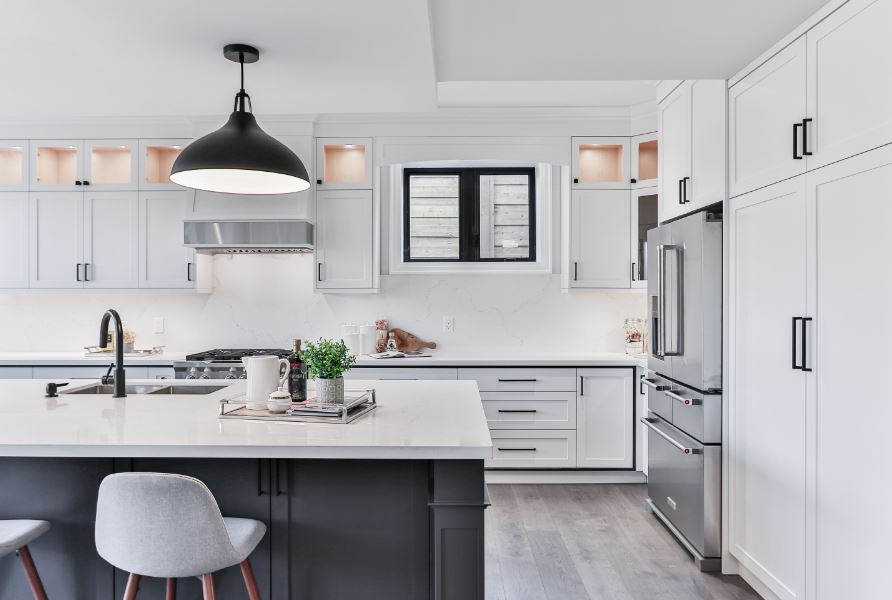
A minimalistic kitchen with white shaker cabinets and simple, black matte bar pulls. Public domain photo by Sidekix Media from Unsplash Get the look with goldenwarm’s Black Square Bar Cabinet Pulls.
Polished metal hardware is also common in minimalism, though the color tones preferred in this are changing with time. While modern styles from recent decades have focused on cool finishes (e.g., chrome, nickel, and silver), the newest trend is warmer finishes (e.g., copper, gold, and especially brass). This combines the sleekness of minimalism with a more welcoming color palette.
Industrial design principles
Industrial designs are popular for both kitchens and bathrooms, and combine the simplicity of minimalism with the rougher lines and textures of materials. Industrial design principles emphasize commercial-style appliances, concrete or stone counters and backsplashes, as well as chrome and stainless steel hardware.

An industrial bathroom featuring tile and natural stone, stainless steel fixtures, and recessed lighting. Public domain photo by Max Vakhtbovych from Pexels.
In industrial kitchens and bathrooms, you’re more likely to see integrated or composite stone sinks, high-shine plumbing fixtures, and natural material textures. Minimalism might be thought of as cool and clean, while industrialism takes both those things and adds a touch of coarseness. Hardware-free cabinets can work in this style as well, and you can even eschew cabinet doors entirely for a deliberately unfinished look.
Eclectic design principles
Recent decades have seen an explosion in what’s considered acceptable modern cabinet hardware and design. Modern styles have tended to commit to a single knob for the cabinet doors and a single pull for the cabinet drawers, or they stuck with one pull style for everything. This provided a sleek, uniform appearance. Nowadays, even more minimalistic, modern designs can use several different types of hardware as part of eclecticism.
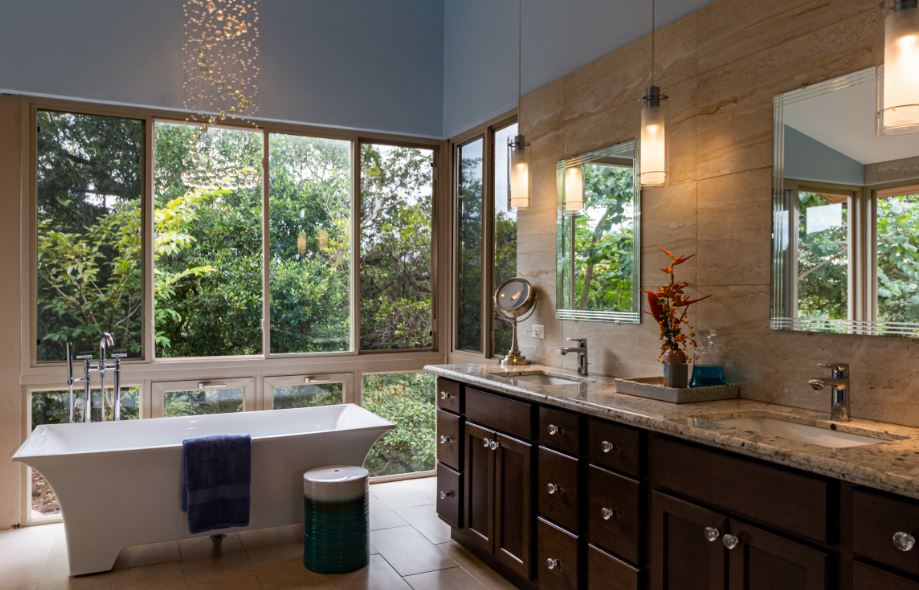
An eclectic bathroom with crystal knobs (like these by Dxhycc), dark wood cabinets, natural stone tile, and modern fixtures. Public domain photo by Fran Hogan from Unsplash.
To achieve an eclectic look, don’t be afraid to pull from a wide variety of styles, from contemporary and industrial to vintage, rustic, and retro looks. Color can be used to great effect in this style, with vibrant patterns being very common. For cabinet hardware, consider pairing vintage bail or pendulum pulls with slab cabinets or more modern, stainless plumbing fixtures. Novelty knobs can also work well, as can brightly-colored round knobs.
Just make sure to tailor the style to the space—a small room jam-packed with different colors and patterns may feel busy, while larger rooms might benefit from a wider variety of styles. It’s also a good idea to pick a statement piece or a single color, pattern, or texture to serve as the main inspiration.
Be careful with eclecticism. It can easily tip into a traditional style or simply look mismatched.
Transitional cabinet styles
Another very popular contemporary style is transitional. The transitional style combines elements of modern and classic designs. Forgoing the flashy colors and patterns of eclecticism, transitional design can be a great middle ground between the uncomplicated look of minimalism and the welcoming warmth of traditional styles.
The core tenet of transitional design is restraint. If you choose ornate cabinets, consider simpler hardware. If your backsplash is more ostentatious, tone down surrounding elements. Balance is key here. Pair neutral tones with brighter accent colors, and try mixing contrasting textures.
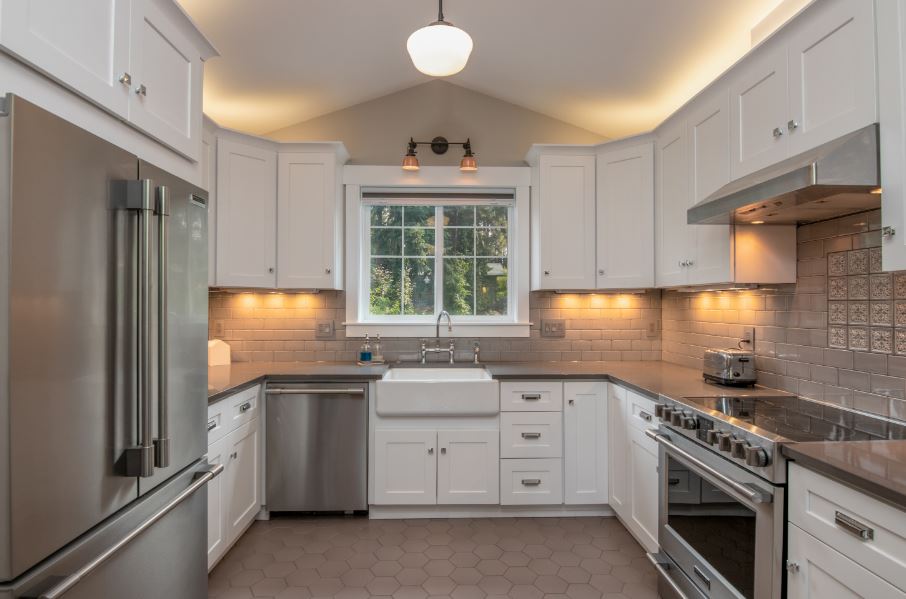
This transitional kitchen features a traditional farmhouse sink with white shaker cabinets, modern-style cup pulls and square knobs, stainless appliances, and warm copper-toned lighting. Public domain photo by Clayton from Unsplash. Get the look with hardware like Cosmas’ Satin Nickel Pyramid Knob and Top Knobs’ Barrington Channing Cup Pull in Brushed Satin Nickel.
The transitional style may not be as showy as more modern (or more classic) designs, but it’s a great option for resale value. You’re also more likely to be able to use the existing furnishings in your kitchen and bathroom with this style, as it’s more about how you mix components, rather than the individual components themselves. If other, more specific styles don’t draw your eye, consider sticking with the happy medium that transitional design can offer.
Because of the mix-and-match nature of transitional design, you have lots of hardware options. Pair modern cabinets with warm knobs that might be traditional in another context or use more modern hardware on classic cabinets that have been given new life with a coat of paint.
Classic cabinet styles
Classic styles reflect a variety of traditions, but in the United States, traditional designs tend to include a focus on wood cabinetry, textured metallic finishes, and classic materials like natural stone.
While there are many classic designs, two types of traditional style dominate modern homes—the more rustic farmhouse and craftsman styles, and the more metropolitan vintage and retro looks.
Traditional cabinetry and hardware
The most traditional style of cabinet is the raised panel cabinet. The face of these cabinets has a central panel that sticks out from the surface that’s surrounded by an inset border and then an outset border. These cabinets can be simple or elaborate, though the more complicated designs may fit better in a vintage space and older home.
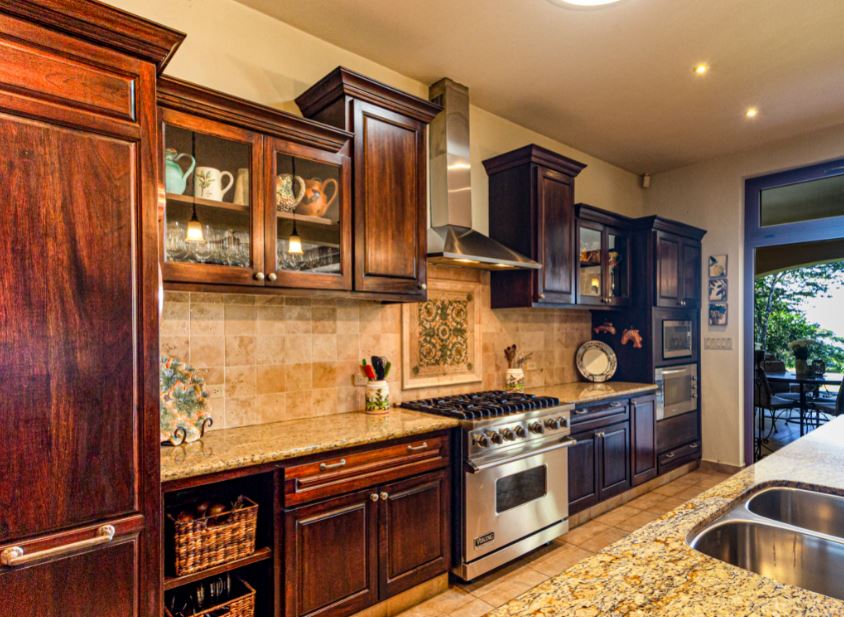
A traditional kitchen with raised panel cabinets, a stone backsplash, and large, weathered bar pulls. Public domain photo by Fran Hogan from Unsplash.
Shaker cabinets are also a good option for more classic styles. While they can fit modern styles as well, they truly are timeless. It’s more the hardware you use on these cabinets that dictates how they look overall.
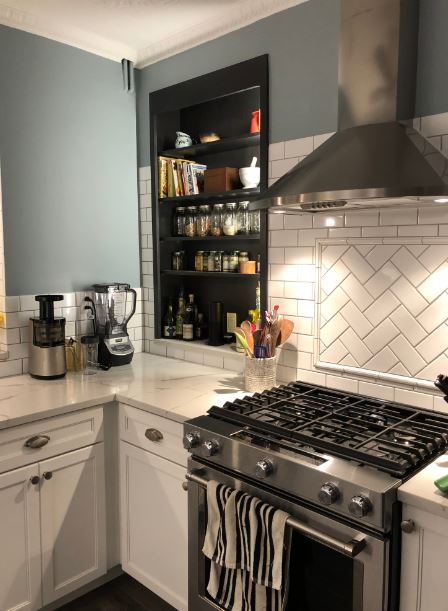
A farmhouse kitchen with cup pulls, round knobs, and white shaker cabinets. Public domain photo by Olive Bauers from Unsplash.
Rustic design principles (farmhouse, craftsman)
“Farmhouse” is a term very often used for kitchens, but any room can fall under the farmhouse style. More than anything, this style emphasizes warmth and hominess. Shaker cabinets are very popular in this style, often painted white. Farmhouse’s classic hardware pairing involves cup pulls for drawers and round knobs for doors.
Other rustic design elements frequently focus on weathered finishes and rugged hardware. And craftsman style kitchens and bathrooms specifically emphasize exposed wood. Both may feature exposed wood beams on their ceilings.
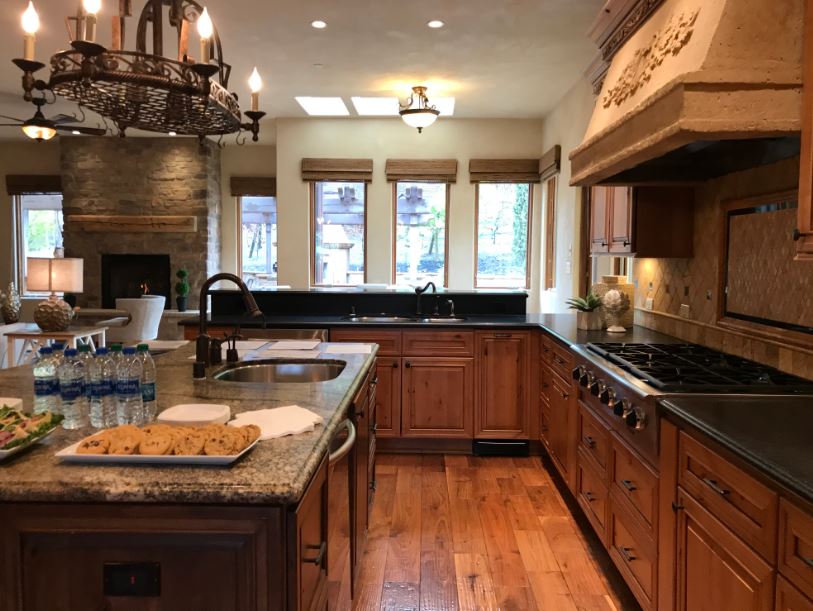
A craftsman kitchen with rough stone backsplash, black matte hardware, and dark stained wood cabinets. Public domain photo by Kenya Placido from Unsplash.
The occasional brighter accent color is appropriate with these styles, but they tend to focus more on neutrals. Stained wood and warm, goldtone hardware are especially common. Hardware is also more likely to have visible screws and to be heavier than in other styles. It makes sense, then, that cabinet latches are also very popular in these styles.
Metropolitan design principles (vintage, retro)
While it has a broad definition, “vintage” generally refers to attempts to adopt styles commonly found at the end of the 19th and beginning of the 20th centuries. Vintage spaces tend to emphasize a sense of old fashioned grandeur. Gold and silver tones are popular in this style, with either a high polish or antique look, and intricate hardware is preferred.
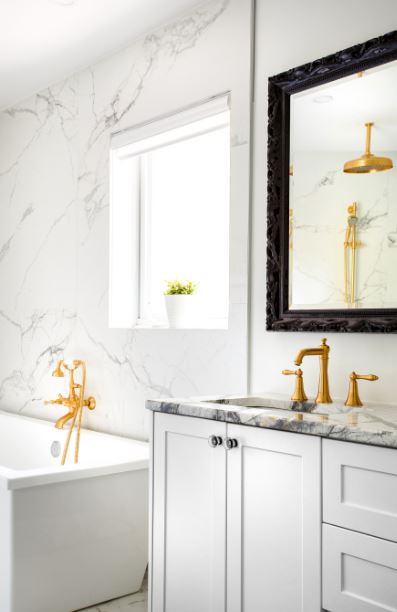
A vintage style bathroom with traditional, goldtone fixtures and crystal knobs. Public domain photo by Nathan Van Egmond from Unsplash.
Vintage kitchens and bathrooms are also natural places for crystal hardware, which can be paired with anything from white-painted cabinets to dark-stained wood to achieve an elegant look. Consider bail, ring, or pendulum pulls for an old fashioned touch.
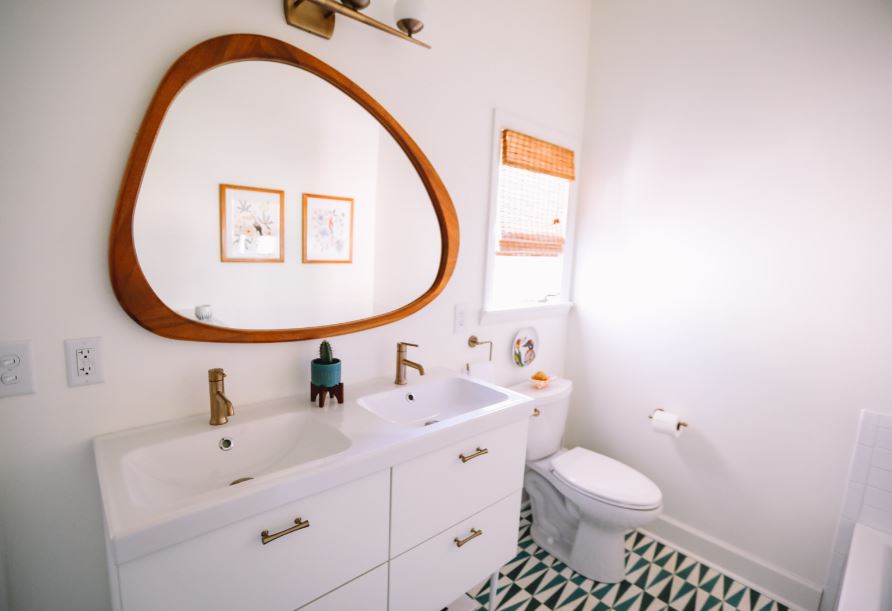
A retro bathroom with a wooden, asymmetrical mirror, brass fixtures, and teal and white patterned floor tiles. Public domain photo by House Method from Unsplash.
There’s overlap between vintage and retro styles, but retro tends to be a bit newer, borrowing from styles popular in the last several decades. While vintage focuses on elegance and a classic approach, retro looks can be a little more fun. You can play around with colors in eclectic styles, and the contrast of different textures is especially important in styles like mid-century modern (which, despite the name, may now be considered retro).
These aren’t the only classic styles, nor the only classic styles that hardware can help you achieve. Location-based styles, like Mediterranean, Scandinavian, and Southwestern, are also options for a more themed approach. Ultimately, though, even if you don’t want the full look, there’s a lot to be gained by taking inspiration from decades and centuries past.
Can you mix and match cabinet hardware?
It is very traditional to pair one type of knob (for cabinet doors) with one type of pull (for cabinet drawers). This holds true for vintage and rustic styles. For more minimalistic modern designs, these knobs and pulls should also be similar in style. Consider classic pairings like cup pulls and round knobs, bar pulls and T-knobs, or bail pulls and crystal knobs.
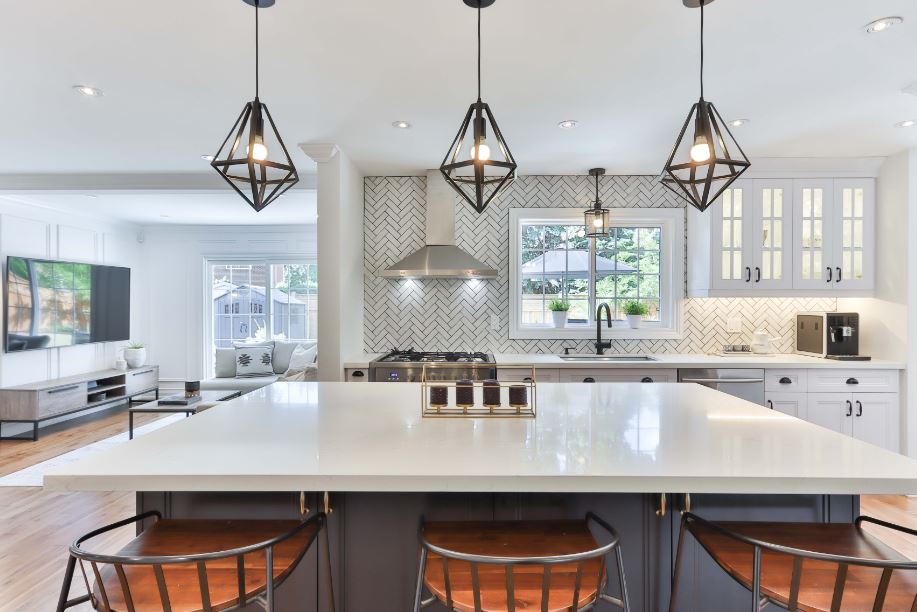
A modern kitchen with black matte hardware on white cabinets alongside darker cabinets paired with brass hardware. Public domain photo by Sidekix Media from Unsplash.
For more fun styles like ecclecticism and retro, and even for some transitional designs, the sky’s the limit. Pair two types of knob (or pull) for over and under counter cabinets. Choose unique hardware for larger bin drawers for an especially trendy look. You can even pick a totally different set of knobs and pulls for a kitchen island to really make it stand out from the rest of the room.
Or get the cabinets in on the action. Paint a section of cabinets a different color (or choose a different wood, paint, or finish) and use different hardware in this section. This can be especially great for bigger kitchens, since it segments a large space into different sections. You can even pair two different kinds of backsplashes to really show the difference.
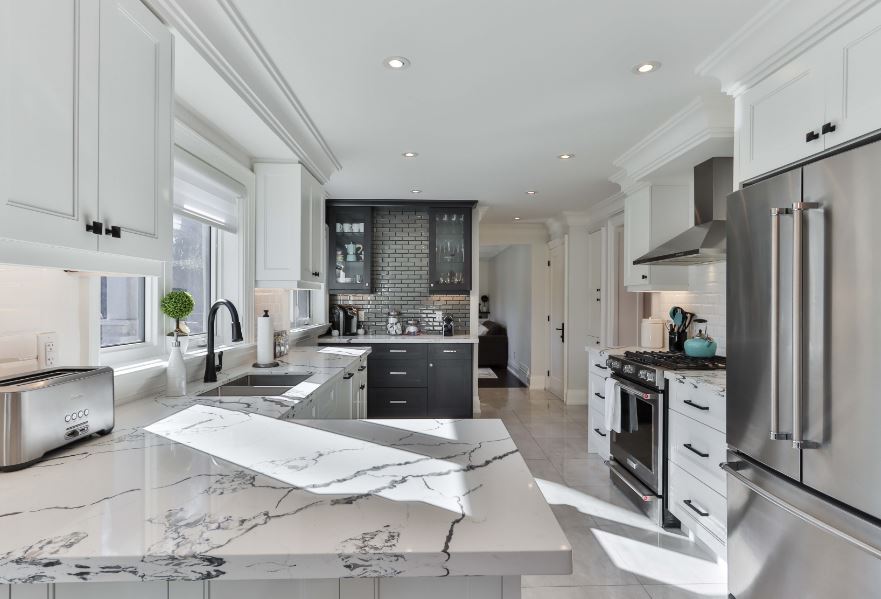
A white cabinet dominated kitchen with a dark cabinet accented coffee nook. Note the variety of cabinet hardware, from square knobs, to standard and oversized pulls of multiple finishes. Public domain photo by Sidekix Media from Unsplash.
Beware too many types of cabinet hardware, though, especially in bathrooms and smaller kitchens. In more confined spaces, multiple styles of knobs and pulls can look busy. Remember to think about how you’re going to use your space, too, and if any of your choices may make interacting with your cabinets more inconvenient.
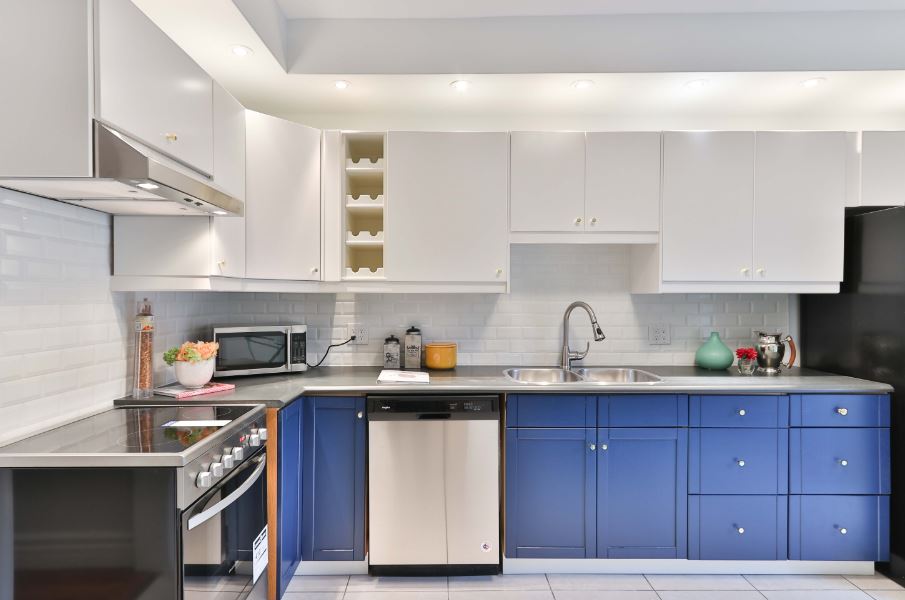
This kitchen mixes color and style of cabinet, but sticks to one main type of hardware. Public domain photo by Sidekix Media from Unsplash. Get the look with a knob like Cosmas’ Satin Nickel Contemporary Round Cabinet Knob.
Make some rules and stick to them
To avoid disjointed spaces, it’s very important to make some rules. There are hundreds if not thousands of options for cabinet hardware of every shape, size, material, and style. To make your life easier (and to keep your space from getting too out of hand) come up with some style rules. These tips will help!
- Bigger spaces allow for more variety. And the more cabinets you have, the more options you have. Normally, you’ve already got the room and the cabinets, so make sure to tailor your rules to fit.
- Use symmetry. An eclectic mix of hardware can be a real statement piece, but similarities are as important as differences. If you change certain elements for certain areas, consider keeping other elements the same across the space for a sense of continuity.
- Be deliberate. Think about the styles we’ve talked about and how best to achieve your favorites. Try to have a plan in place before you start installing your hardware.
- Keep different hardware distinct. Matched cabinet hardware can be a great look, as can highly contrasted hardware. But avoid similar looking hardware that isn’t identical. This is likely to look like a mistake, not a style.
- Similarly, avoid combining hardware that’s the same material, but a different finish. For example, don’t pair a weathered pull with a polished nickel knob.
- Relatedly, avoid pairing very similar types of metal. Warm, gold toned finishes work best with silvery, cool tone ones. You may be able to get away with a very pale brass and an oil rubbed bronze, but pairing chrome and nickel will likely clash.
- Since there can be inconsistencies between manufacturers, purchase similarly finished hardware from the same place. It makes everything easier.
Lastly, remember to have fun with it! Cabinet hardware is a great place to let your personality shine, just don’t forget that you still have to use the space.
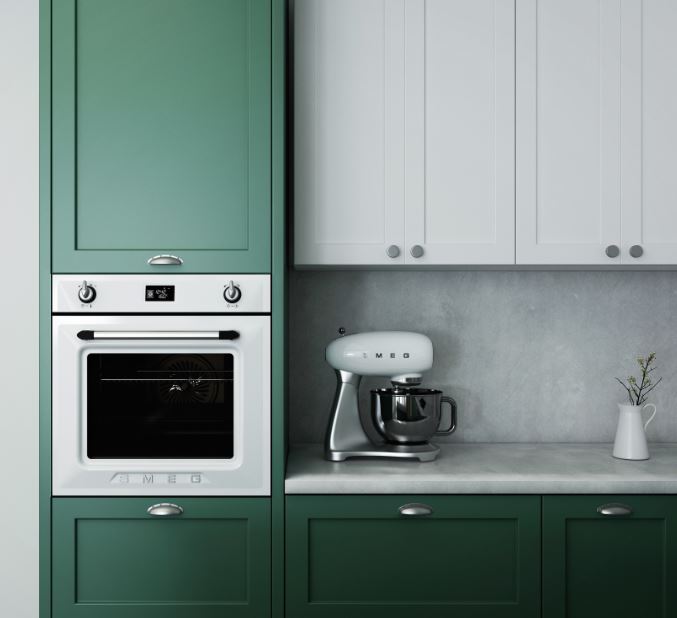
See this kitchen with cup pulls on the green cabinets and round knobs on the white. Public domain photo by Kam Idris from Unsplash.
Cabinet hardware DIY tips
Once you’ve got a style picked out, you’ll probably have some hardware to install. Installing cabinet hardware is one of the easier DIY jobs you can tackle. But there are still a few things to know before you dive in.
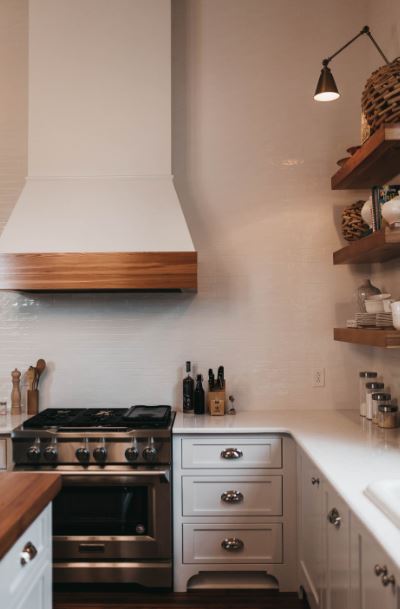
A farmhouse kitchen with white shaker cabinets and polished chrome hardware. Public domain photo by Camylla Battani from Unsplash.
You’ll probably want a drill, and you should make sure the screws you get are the right fit for your hardware (though the best cabinet hardware will come with everything needed to mount it). A cabinet hardware jig can make sure your mounting holes are centered and straight.
If you’re replacing your hardware and don’t need the old mounting holes, consider wood putty for smaller holes and wood filler for larger ones that may need to be stained to blend into the cabinets.
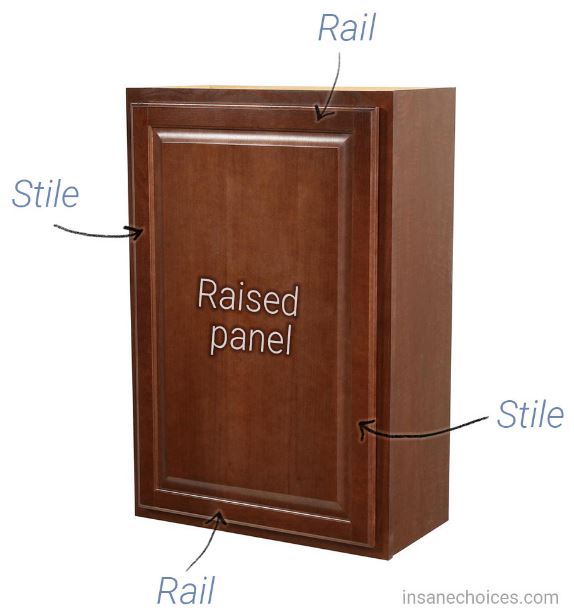
See this raised panel cabinet by Hampton Bay with side stiles and top and bottom rails.
After you’ve got your cabinets prepped, the most important question is placement. Once you’ve chosen your hardware, you need to decide where exactly you’re going to mount it. This might seem self evident—on the cabinets, right? But there’s a lot of real estate on cabinet doors and drawers to choose from. Plus, the type of hardware, the type of cabinetry, and the style you’re aiming for all matter here.
As we discussed earlier, there are three basic types of cabinets: raised panel, recessed panel (or shaker), and slab. Slab cabinets, like the name suggests, are one flat piece of material. The center of raised and recessed panel cabinets, called the panel, is on a different level than the sides, top, and bottom. The sides are called stiles, while the top and bottom are called rails. For the purpose of installing cabinet hardware, raised and recessed panel cabinets have roughly the same rules.
Installing hardware on cabinet doors
Knobs and pulls on raised and recessed panel cabinet doors are almost always installed in the center of the stile opposite the hinges. For slab cabinet doors, this is approximately 1 to 1 ½ inches from the edge of the door. Their vertical position, however, depends on what style you want.
For a traditional look, perfect for classic styles, install knobs in the center of the bottom rail (for upper doors) or the top rail (for lower doors). Pulls can be installed with one of its mounting points in this same position, again, about 1 to 1 ½ inches from the edge of the door.

This modern kitchen features knobs mounted in a traditional manner. Public domain photo by Sidekix Media from Unsplash.
Knobs can also be installed in line with the edge of the rail (about 2 to 3 inches for slab cabinets). Pulls can be installed with one end in this same position. This can provide a slightly more modern look, though it’s also popular in farmhouse and transitional styles. If your cabinets (or cabinet hardware) are complicated in style, this may make your kitchen or bathroom look busy.
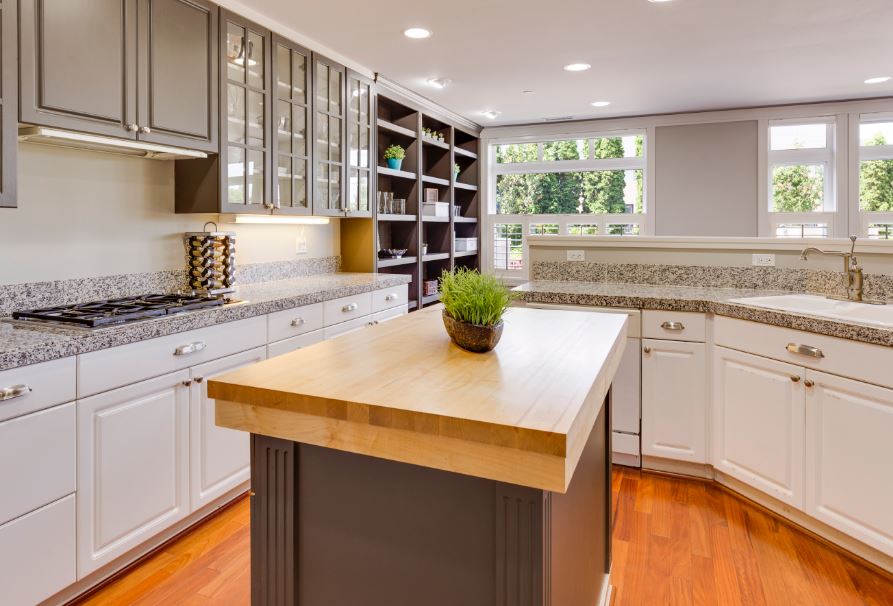
A transitional kitchen with farmhouse sink and cabinet knobs in line with the edge of the cabinet door rail. Public domain photo by Francesca Tosolini from Unsplash.
Lastly, installing a knob or pull in the center of the stile (vertical center of a slab cabinet) can be a great option, especially for modern minimalist styles, as long as your hardware is easy to reach.
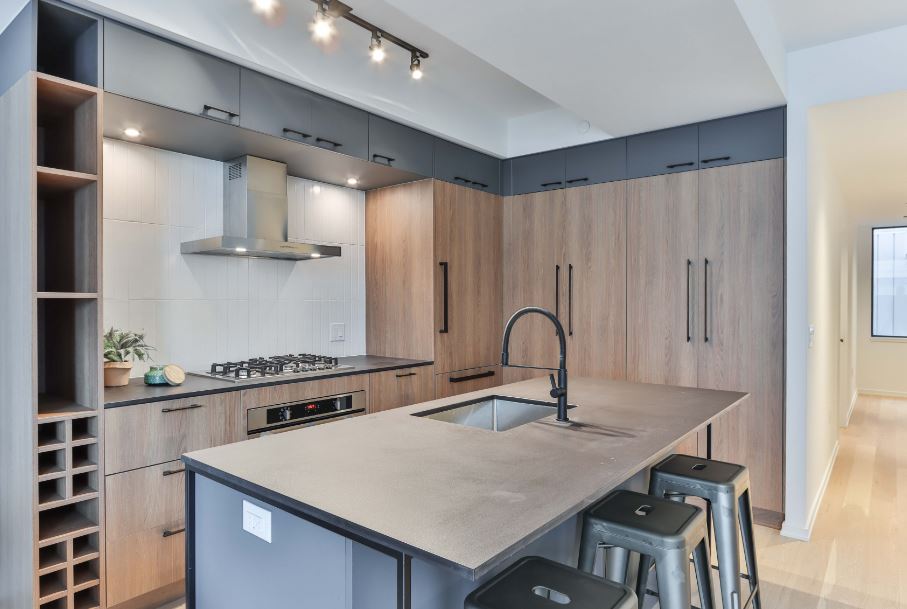
A this modern kitchen with pulls mounted in the center of the cabinet doors. Public domain photo by Sidekix Media from Unsplash.
Most importantly, make sure your cabinet doors are easy to open. Placed too high (or too low, for undercounter cabinets), your cabinet doors might be a pain to use. You should never have to worry about cabinet doors being easy to reach. While it is sometimes suggested as a modern style, it is not recommended to install door pulls horizontally. This can make your cabinet doors difficult to open.
Installing hardware on cabinet drawers
Cabinet hardware should always be installed in the exact horizontal center of a drawer, no matter the style. Any other placement makes the drawers difficult to open. The only exception to this is for especially long drawers (more than 18 inches wide) which require either an extra-long pull or two knobs or pulls. For a double knob (or a double pull) the center of the hardware should be around ⅙ of the width of the drawer away from each end.
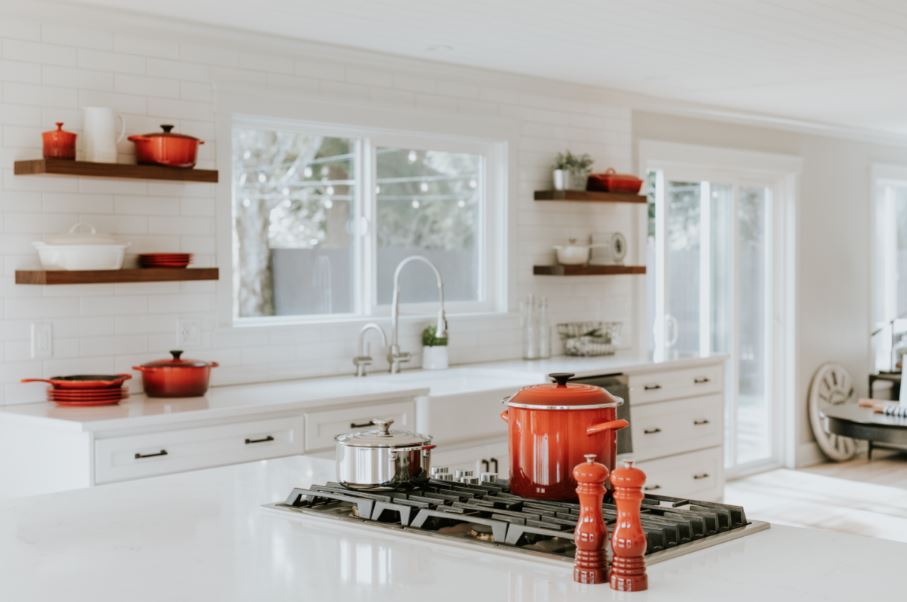
A modern kitchen with double bar pulls on its longer drawers. Public domain photo by Becca Tapert from Unsplash.
For most drawers, however, you’ll only need one piece of hardware. Single knobs and pulls should be centered vertically on the panel for raised and recessed panel drawers, or you can mount them in the center of the top rail. For slab style drawers (and for a more modern look) consider installing your knob or pull slightly higher than the drawer’s vertical center. For undercounter drawers, this can make the hardware look centered from a higher eye line.
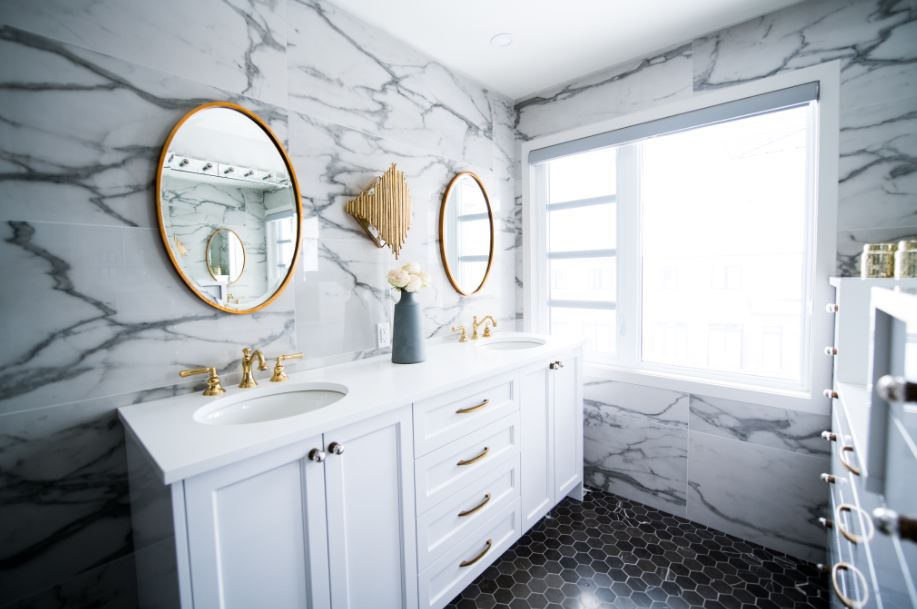
See this bathroom with pulls mounted in the center of the cabinet drawers. Public domain photo by Christian Mackie from Unsplash.
The most essential question for cabinet drawers is: will the drawers be easy to open? Drawers that are likely to be filled with heavy items (or many items) should still be able to open smoothly. Hardware choice and placement can make your cabinets easier to use.
Backplate mounting
Mounting a backplate isn’t a particularly difficult DIY job, though there are a few things to keep in mind. If you’ve chosen a hardware mounting style where the knob or pull is very close to the edge of the drawer or door, make sure the backplates you choose will fit fully on the body of the cabinet.
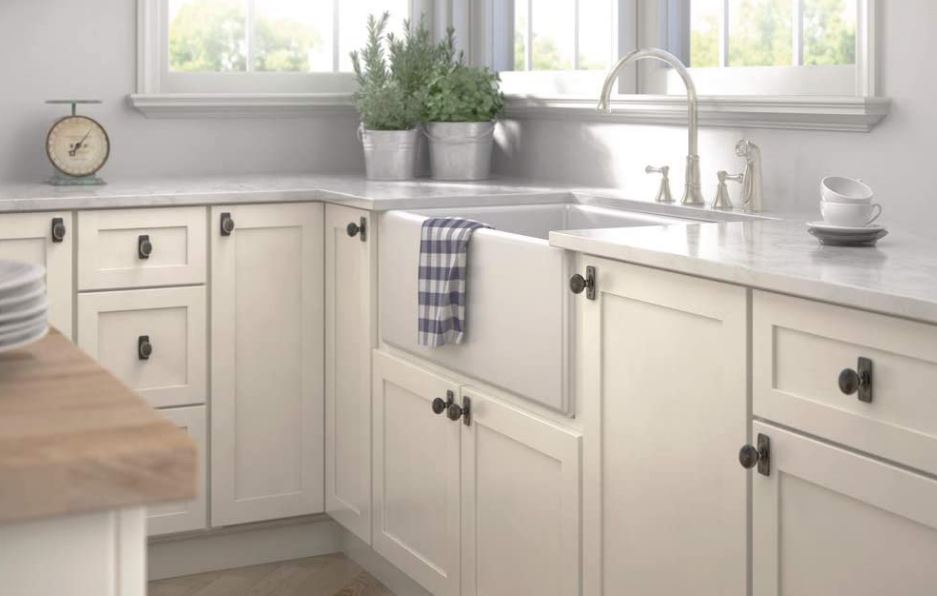
See Liberty’s Knob with Backplate in Distressed Iron for a farmhouse style.
Careful measurement is especially important for shaker cabinets. The recessed central panel and the top and bottom rails can be very narrow on smaller drawers. The side stiles on shaker cabinet drawers can also be narrower than you might think. Make sure there’s room for the entire body of the backplate to be flush against the cabinet before attempting to install them.
Cabinet hardware styles overview
Whether you want a cutting edge style or a classic look, there are a few things to keep in mind that will make your space better and your job easier.
- Count your cabinets first. Remember, knobs are cheaper than pulls, so consider a default knob for areas that don’t need special interest, especially if you have a lot of cabinets.
- Consider shaker cabinets for best resale value.
- Choose styles that best fit your tastes, but also the space and how you use it.
- Remember, clean lines for minimalism and vintage, while industrial and rustic can be a little rough around the edges. For eclectic and retro, the sky’s the limit!
- Don’t be afraid to mix hardware! Just keep your space in mind, and come up with some rules.
- Decide how and where you’re going to mount your hardware.
- Consider a cabinet hardware jig for easy installation.
- Don’t forget backplates are an option!

